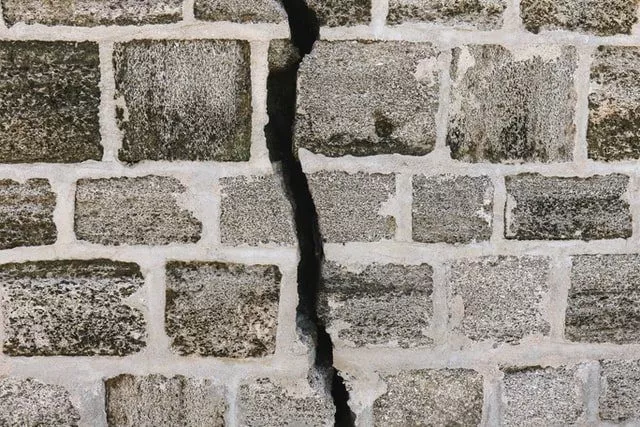
When is it too late for subsidence to be fixed?
If you’re worried about subsidence in your home, you’re not alone.
Many homeowners find themselves concerned about this and similar issues, but even in extreme cases, there is normally a resolution that can help at least partially fix the damage.
What is subsidence?
Subsidence is the process of your property sinking into the land it’s been built on.
This problem can be dramatic, as if the property sinks too low, it could potentially lose some of its foundations or even (in extreme cases) collapse.
The reasons for this collapse are numerous – your property structure is essential for the integrity of the home, so subsidence is always worth taking very seriously.
Keep in mind that a full-scale collapse is unlikely if your property is carefully monitored for the early signs of subsidence, and even in extreme cases there are things that can be done.
What causes subsidence?
Subsidence has many different causes, and it is often not entirely preventable. As houses age and ‘settle’, they may begin to show signs of early subsidence.
However, this is more common when there has been poor building work carried out on the property, or when it has been constructed on top of soft materials that have unstable moisture control.
Anything that brings water into your structure can cause subsidence, as can anything that causes the foundations to dry out.
For this reason, trees are a major risk factor when they’re planted close to the home.
Depending on the age of your property, the process of subsidence may have already begun before you even moved in. Even new build homes are not immune to being affected by subsidence.
Spotting the signs of subsidence
The first step towards finding a solution to subsidence is to know how to identify it.
This will help you report the problem and resolve it as quickly as possible – and crucially, before it develops too dramatically.
The foundations of your house are vital, but if you suspect subsidence, don’t panic.
Sometimes, what is initially thought to be subsidence is actually just the result of natural fluctuations in the humidity levels or temperature of your home.
Newer builds, for instance, sometimes begin to showcase small cracks in plaster work as the structure settles. However, it’s important to get the property checked by an expert if you have any doubt.
What should you look out for when carrying out your subsidence check?
The most significant sign of damage is liable to be cracks to interior and exterior walls.
These could be anywhere in your house, but in particular carefully assess the areas around windows and doorframes. Also, be aware that larger cracks in the wall are more likely to be a sign of advanced subsidence.
When cracks can be detected outside as well as inside the home, this is a significant sign of possible subsidence.
If you’ve seen these (or any of our indications) be sure to contact a structural repair firm to find out what your options are.
How do you treat it?
As soon as you suspect subsidence in your property, it’s time to call in some experts to help resolve it. The action plan will depend on how severe the issue has become, as well as the root cause of subsidence.
Your structural expert will be able to provide tailored advice and help, but no matter how severe the case, there’s no need to despair!
While the course of treatment is likely to be more detailed with severe cases, there are still ways to protect your property and stop the problem from getting any worse than it already is.
One option is underpinning, which will increase your foundation size using concrete piles.
Keep in mind that only an expert who understands the severity of your subsidence will be able to provide accurate advice and help.
What do the professionals need to know?
In most cases, it’s important to identify the initial cause of any subsidence on your property, so that it can be fixed in a timely manner.
Let the professionals know where you have identified cracks in the home and take photographs if possible.
They will want to carry out an in-person check and will need to arrange additional tests, but everything you can do to provide information will help speed up the process.
The takeaway
Discovering your home has subsidence can be devastating, but don’t despair if it affects you.
It’s never too late to fix, but as with many structural issues, the sooner you identify it, the sooner you can assemble the right team to fix it.
Likewise, whilst it’s never too late to find solutions, catching the issue early will lead to a faster resolution with less drastic treatment.
If you’re in need of help with a structural problem on your property, get in touch with our experts today.